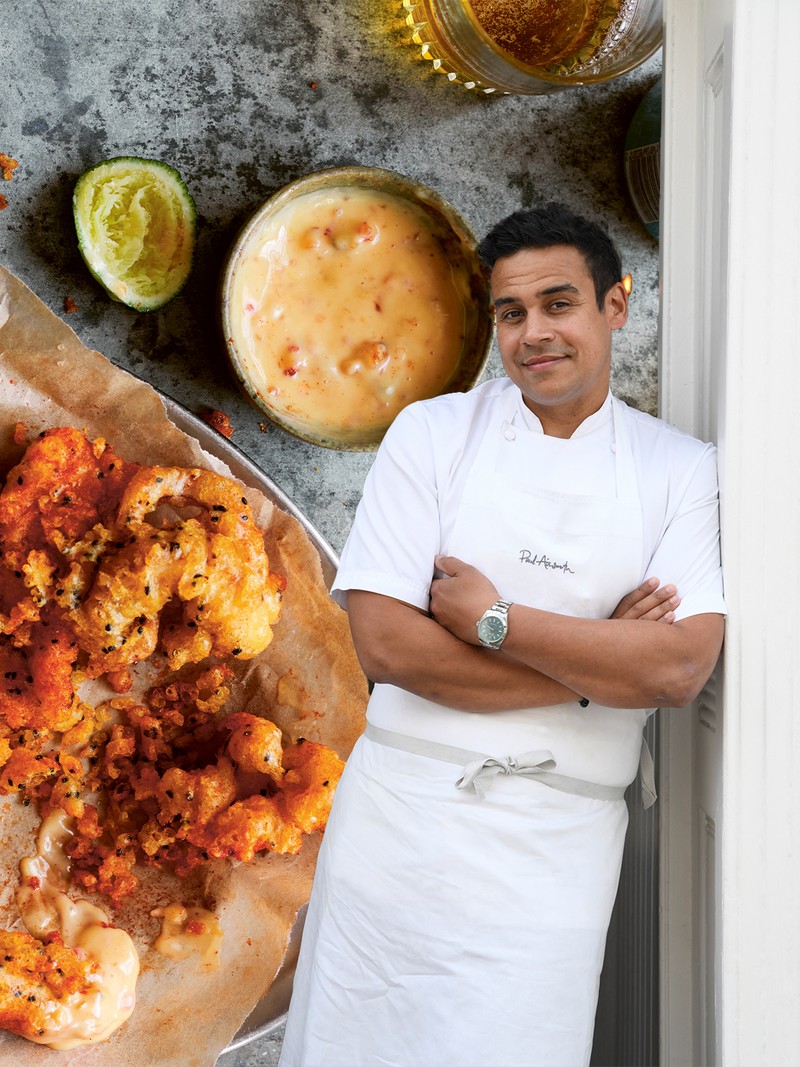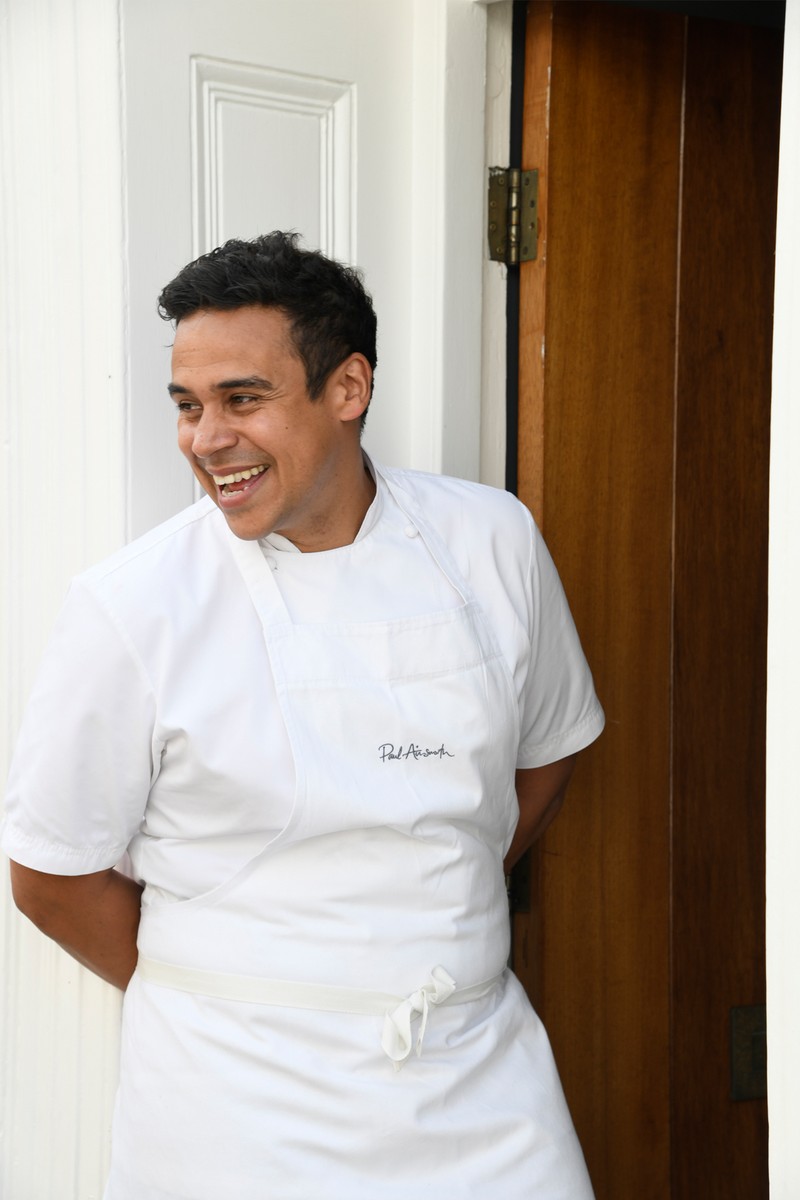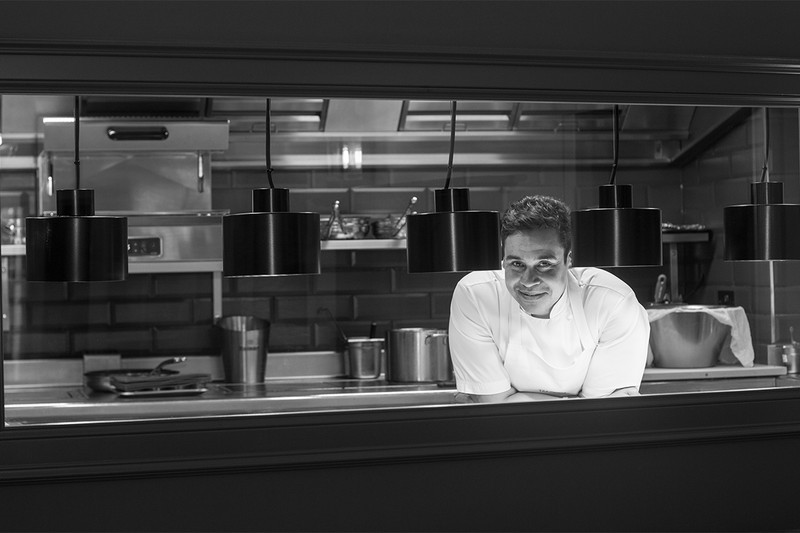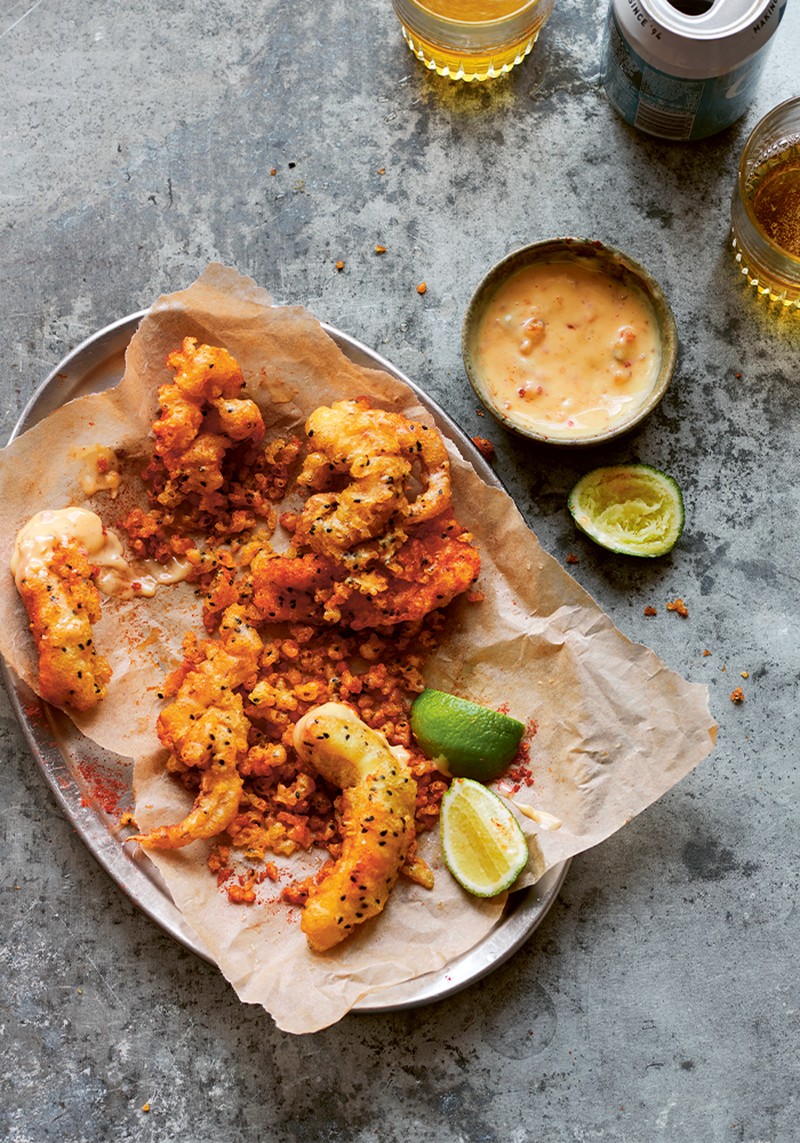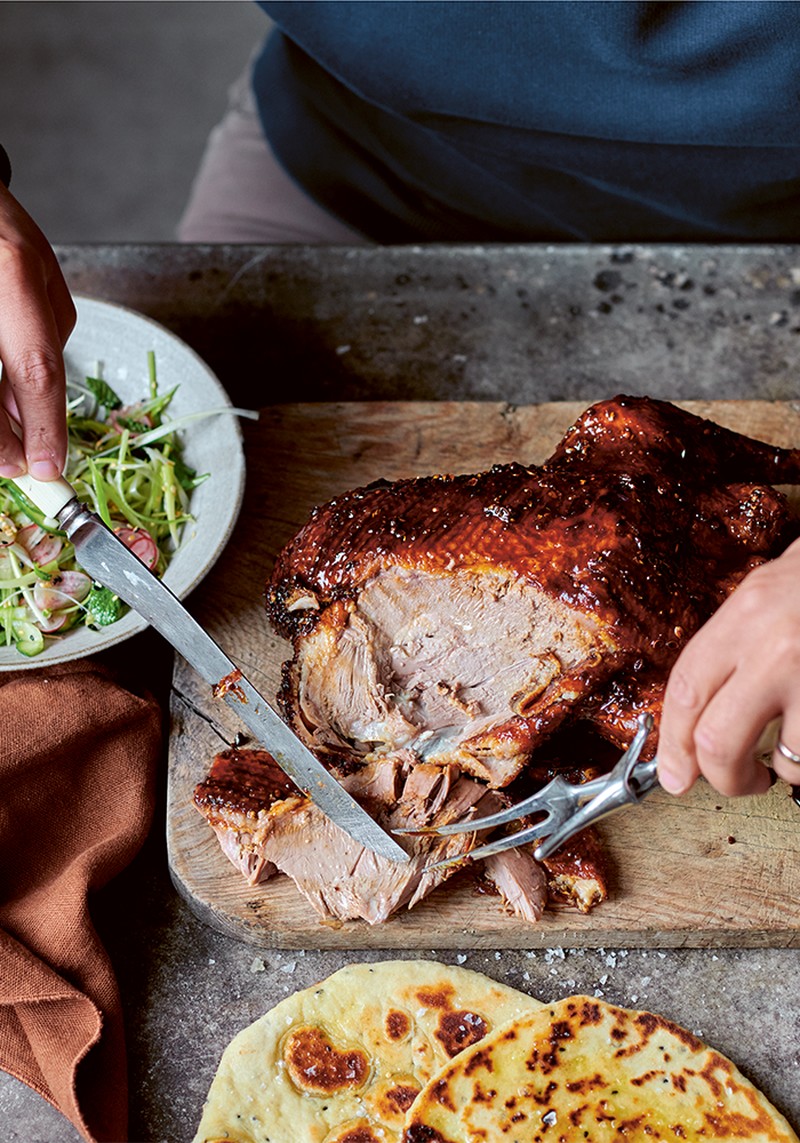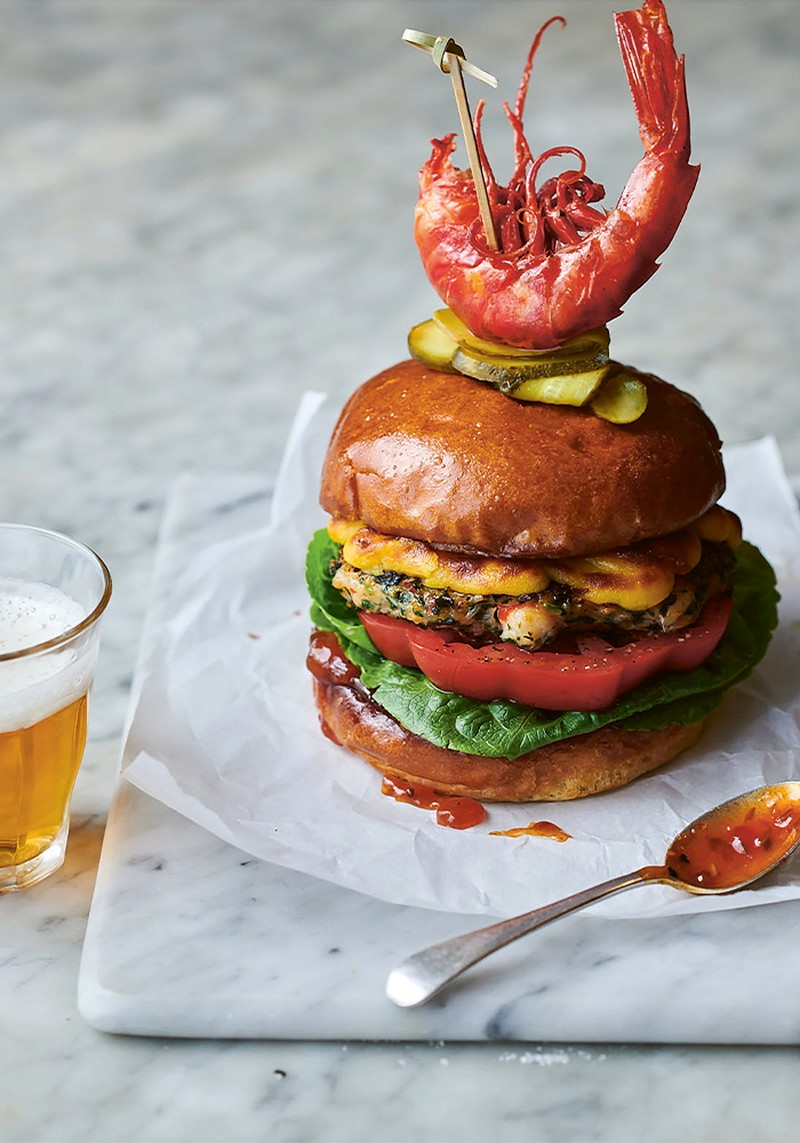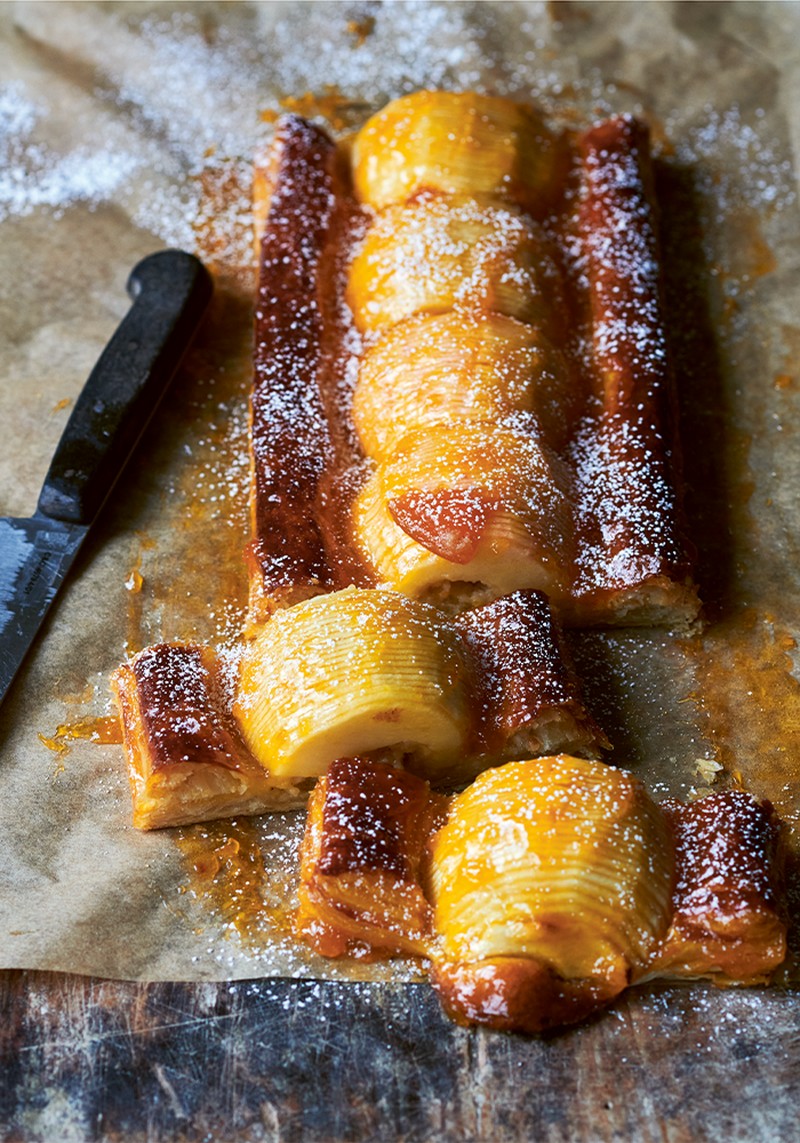5 Classic Paul Ainsworth Recipes
It all started with my parents. My mum and dad owned a bed and breakfast in Southampton called Bitterne Park Guest House, so I was around food and hospitality from an early age. It was a very warm environment to grow up in, and I was lucky enough to spend my childhood with my mum, dad and sister, around lots of amazing food. My parents’ work ethic is something that has inspired me daily in my hospitality journey. My mum, Annabelle, is from the Seychelles and my dad, Dave, was born and bred in Blackpool. Mum would make amazingly fragrant dishes like traditional Seychellois fish curries with potatoes, while my dad cooked homely English food. A favourite of mine was always his corned beef and potato pie. Both their heritages have had a strong influence on the way I cook today.
I always wanted my first cookbook to be more than a collection of recipes. I wanted it to acknowledge the people who inspired me, throughout my career. I was very keen to include some of the most loved dishes from across our restaurants so that they can be recreated at home. To name a few, from Caffè Rojano there’s the Quattro Formaggi burger, sticky PX-glazed chicken wings and pickled salad, and Wicked garlic dough balls – which were born out of using up the spare pizza dough. The fish and chips from my pub The Mariners was another must, as was its ploughman’s.
I am a firm believer that custard is one of the greatest inventions of our time. That’s why my cookbook has a whole section for it. When we opened The Mariners in 2019, I called the pudding menu ‘& Custard’ because I wanted it to be the type of traditional pub that celebrates those nostalgic British desserts that all come with custard. I think my powerful memories of custard go back to Bitterne Park Guest House, where my dad would make a trifle for our guests that inspired the trifle recipe in the cookbook. His custard of choice was always Bird’s which, in my opinion, remains the finest instant custard available.
Food is clearly nostalgic for me. Each recipe in the book tells a story about key moments in my life and the inspiration behind it, so it's filled with anecdotes and memories. One of my favourite food memories is my grandmother’s chip butty. Granny Ainsworth was my hero and her chip butties were legendary. Growing up, my sister and I would spend every Saturday night at her house. I have very fond memories of her standing by a pan of oil warming on the hob, while cutting the potatoes into chips in her hands, rather than on a chopping board. She would serve the hot chips between two thick slices of white farmhouse bread, slathered in butter and ketchup. The chips melted the butter, which would swim with the sauce. It doesn't get much better.
No excuses then – here are five of Paul’s classic recipes to try at home
Squid & Scraps with Hot Sweet Chilli Mayonnaise
Fresh squid is an incredible ingredient, but it can sometimes be tricky if you’re not used to cooking with it, as it can go rubbery quite quickly. This recipe will give you tender results every time, and the bubbles from the sparkling water keep the batter light and airy. It’s best to make the batter fresh and use straight away – at The Mariners, we remake it every 45 minutes. This dish is deeply comforting, especially with the scraps and the lovely heat from the sweet chilli mayonnaise.
Heat a saucepan or small deep-fat fryer with the oil, bringing the oil up to 180°C, using a food thermometer to check the temperature.
First, take the squid and, with a sharp knife, gently score it to create a fine criss-cross as this will help tenderise the texture. Next, cut these pieces into goujons, roughly 5 x 2 cm. Take the tentacles and cut them in half.
Make your batter. Place the flour, salt, nigella seeds and turmeric in a large bowl. Stir the dry ingredients together, then slowly add the fizzy water with a whisk until you have a consistency like double cream.
To make the sweet chilli mayonnaise, whisk all the ingredients together and chill until needed.
To make the coating, place the self-raising flour on a plate and season with sea salt and black pepper. Lightly season the squid with sea salt, then roll it in the seasoned flour. Shake off any excess and then coat the squid in the batter. Gently and carefully transfer the squid to the hot oil, allowing the batter to drip off your fingers into the oil to create the scraps. Fry the squid for 3-4 minutes until crisp and golden, then drain on kitchen paper and season with salt and the smoked paprika.
Serve with the sweet chilli mayonnaise and wedges of lemon or lime, or both. The cold mayonnaise with the hot battered squid is amazing.
Brown Butter Baked Hake, Cucumber & Samphire Dressing
One of my favourite ways of eating fish is with some form of what we chefs call a ‘compound butter’. What that means is a good-quality butter flavoured with all kinds of ingredients. Hake, when it’s in season, baked with the saltiness of samphire and the freshness of the cucumber and seaweed is breath-taking.
For the croutons, place a medium frying pan over a high heat and add the oil, then the butter. Tear up the bread into bite-sized rustic chunks and add to the foaming butter. Add the garlic, mace and a pinch of sea salt and keep the croutons moving until they are crisp and toasted. Drain onto kitchen paper.
Preheat the oven to 175°C fan.
Place a medium frying pan over a high heat and add the butter. Spread the butter out with a spoon but don’t shake or move the pan. The butter will go foamy, then start to brown. Once the butter is a lovely golden brown, pass it through a flour sieve into a bowl and leave to cool, then transfer to the fridge. Once the butter has set, give it a good whisk to bring it back to a smooth consistency.
Place the hake on a non-stick or lined baking tray. If they are not brined, season all over with sea salt, then liberally spoon the brown butter all over each piece, making sure to spread it on the bottom of the fish and the sides. Bake for 7 minutes or until a probe measures 45°C in the centre of the portion.
In the same pan you used to brown the butter, add a splash of olive oil and return to a medium heat. Add the shallot, garlic and a pinch of sea salt and cook for 2-3 minutes without browning and until soft.
Once the fish is cooked, remove from the oven and pour the brown butter and all the hake juices from the baking tray into the pan with the shallot. Leave the fish on the tray and allow to rest for 2-3 minutes while you finish the sauce.
Add the samphire, lemon juice and chopped seaweed to the brown butter and shallot mixture. Stir for 30 seconds, so the samphire starts to wilt slightly. Now finish the dressing with the chives and parsley and a couple of twists of cracked black pepper.
Place the baked hake onto plates and divide the samphire brown butter dressing between them. Finish with the fresh cucumber and mace croutons over the top, and the lemon and lime zests. This is my idea of seafood heaven and I hope you enjoy it too.
Friday Night Honey-Glazed Duck
One of my fondest food memories of growing up in Southampton is the rare treat of a Chinese takeaway. Of all the things that my parents would order, what I enjoyed the most was the duck with pancakes, spring onion, cucumber and hoisin sauce. Dad would always shred the duck with two forks and we’d all get stuck in. It was so moreish I didn’t want it to end. This is a real centrepiece dish for the table, and I promise you it will blow your family and friends away when you serve it to them.
Preheat the oven to 180°C fan.
Lightly score the duck breast with a sharp knife to help the fat render down while cooking. Now generously season the duck all over with sea salt, place on a roasting tray and roast for 30 minutes, basting the duck thoroughly with the rendered fat half-way through.
Remove the duck from the oven and pour out any rendered fat from the roasting tray. Rub the coriander seeds and pink peppercorns all over the skin of the duck, followed by all the honey, making sure the duck is entirely coated. Reduce the oven temperature to 140°C fan, return the duck to the oven and cook for another hour, basting every 15 minutes with the rendered fat and honey.
Reduce the oven temperature to 120°C fan and continue cooking the duck for another hour, again basting every 15 minutes. In the final 10 minutes, remove the duck from the oven and drain away any excess fat from the tray, leaving only the caramelised honey in the tray. Baste this honey over the duck, then place it back in the oven for a final 5 minutes. You should have cooked the duck for 2½ hours in total. Remove the duck from the oven and allow it to rest for 20 minutes.
To make the salad, take a large mixing bowl and diagonally slice the cucumber to create large, thin strips. Take the spring onions and cut them into thin matchsticks. Add the sliced radishes and toasted sesame seeds, and either slice or tear your mint into the salad. Now add the rice wine vinegar, olive oil, a pinch of sea salt and a couple of twists of pepper, and mix everything together.
Just before serving, reglaze the duck with any excess honey that has fallen off into the roasting tray. Place the duck in the middle of the table with a pile of warm flatbreads, the crisp, fresh salad, and a pot of plum sauce.
Get stuck in by tearing off some lovely succulent duck and placing it on a flatbread with some fresh salad and plum sauce.
The Next Level Burger: Crab, Prawn & Ginger
I came up with this recipe when I was fortunate enough to be asked by Gordon Ramsay to co-host a show called Next Level Chef. One of the rounds was all about burgers. I gave my team a masterclass on burgers with a twist, which is how this was born. It’s delicious and great for any day of the week, especially in the summer when you’ve got the barbecue out.
First, make the burgers. Add the tiger prawn meat to a food appliance with a blade attachment, or a blender, and blitz until you have a paste-like texture. Transfer the prawn paste to a mixing bowl, add the rest of the burger ingredients and thoroughly combine. Place a piece of parchment paper directly onto the burger mixture and chill in the fridge for 2 hours.
For the rarebit, add the cheese and milk to a large saucepan, and heat together over a medium-low heat, stirring occasionally to make sure that it doesn’t burn. Once it’s melted and starts to bubble, add the breadcrumbs, flour, mustard and black pepper. Cook for about 2 minutes, stirring constantly to cook out the flour. When the mixture has thickened, take the saucepan off the heat and spread the cheese mixture on a tray to cool.
Once cool, transfer the mixture to a food appliance with a blade attachment, or a blender, then add the Worcestershire sauce and blitz for about a minute until smooth and creamy. Add the eggs and egg yolks and blitz again to incorporate until smooth. Set aside.
Once the burger mixture is firm and well chilled, weigh it into 130g balls. Lightly wet your hands with water and push the burger balls down with your hand to form patties. Place the patties on a tray and return to the fridge.
Just before you cook the burgers, have your buns, lettuce, sliced but unseasoned tomatoes, sliced gherkins and chutney ready to go. Take a large frying pan and heat over a medium-high heat. Add the olive oil and lightly season the prawn and crab burgers with sea salt. Place the patties in the frying pan and cook on each side for 2 minutes. Once both sides are cooked, add the butter to the pan and melt until foaming. Now add the whole prawns to the pan and continually baste the burgers and the prawns for another 4 minutes, turning every so often. Turn off the heat and allow the burgers and prawns to rest in the butter for 2 minutes.
Now place the burgers on a baking tray, spoon or pipe the rarebit on top, and place under a hot grill to caramelise the rarebit. Place the prawns on a plate and keep warm. Drain off some of the butter from the frying pan, place back on the heat and toast the buns in the frying pan. The buns will absorb all the lovely crab and prawn burger flavour.
To finish, spread the chutney on both the base and the lids of the toasted buns. Take the bun bases and place 2 pieces of gem lettuce on each one. Add slices of tomato on top and season with a splash of the extra virgin olive oil, the sherry vinegar and lightly season with sea salt and black pepper.
Now place the rarebit-glazed burgers on top of the tomato and top with the burger lids. Take the warm prawns and gherkin slices and place on top of the buns and skewer a large burger stick through the middle of each one.
Apple, Frangipane & Apricot Jam Slice With Cornish Clotted Cream
When No6 opened its doors in 2005, we were practically unknown, and foot traffic was scarce for months. To adapt and keep the business afloat, we diversified our offerings, introducing a menu featuring sandwiches, cakes and pastries. Nothing extravagant, just simple fare aimed at survival. These slices were a staple of that time – basic puff pastry filled with green apples, frangipane, and apricot jam, served with a dollop of clotted cream. They were as good then as they are now, and embody the ethos we live by, ‘Make it happen!’
Preheat the oven to 175°C fan.
Using a stand mixer with the paddle attachment, add the caster sugar and butter to the bowl and beat together until light and fluffy, then slowly add the eggs. The mixture will separate slightly; to bring it back together add the plain flour to stabilise the mixture. Add the ground almonds and slowly combine, then finish by adding the vanilla seeds and amaretto. Transfer the mixture to a piping bag and place in the fridge to rest for a few hours before using.
Next, take the ready-rolled puff pastry and cut out a large rectangle, roughly 30 x 11 cm and 5 mm thick, plus 2 additional strips of pastry 30cm long and 1-2 cm wide. Place the large rectangle of pastry onto a baking tray lined with baking paper and lightly brush each long edge with egg yolk. Lay the strips of pastry on top of the yolk on each side, keeping the edges neat and in line. This will add an extra rise to the sides of the puff pastry slice and really help contain the apples.
Remove the frangipane from the fridge and pipe an even line of frangipane down the middle of the pastry slice, from the top to the bottom.
Cut the peeled and cored apples in half, from the top to the bottom. Place each half cut-side down, then slice the apple very thinly across the width, keeping the apple slices together. Then, starting at one end of the pastry, place each sliced apple half onto the pastry slice so the frangipane runs through the cavity left by the core. Place the next sliced apple half against the previous one until the pastry is completely covered lengthways. The apples should fill the whole slice but shouldn’t overhang the two thin edges of pastry that you stuck to the base.
Glaze the pastry edges with the egg yolk, then bake for 30-35 minutes until the pastry is a deep golden colour and the apples are cooked through.
Melt the apricot jam gently in a saucepan and, as soon as the slice is removed from the oven, glaze the apples and pastry with the jam and leave to cool until just warm.
Serve by cutting a slice, lightly dusting it with icing sugar and serve with a big dollop of Cornish clotted cream on top.
For the Love of Food by Paul Ainsworth (Pavilion Books). Image credit Issy Croker.
All products on this page have been selected by our editorial team, however we may make commission on some products.
DISCLAIMER: We endeavour to always credit the correct original source of every image we use. If you think a credit may be incorrect, please contact us at [email protected].
